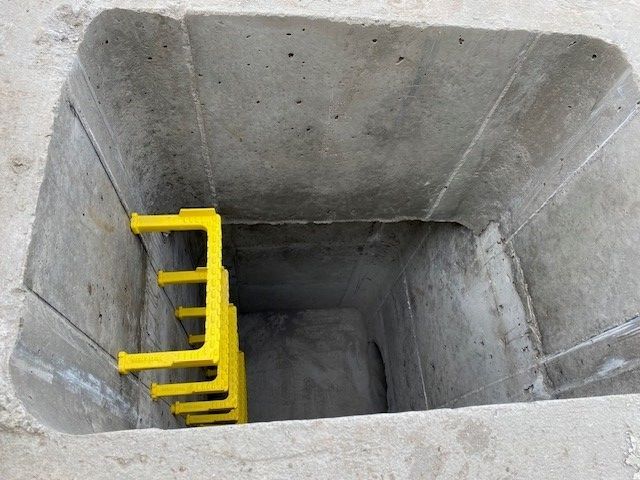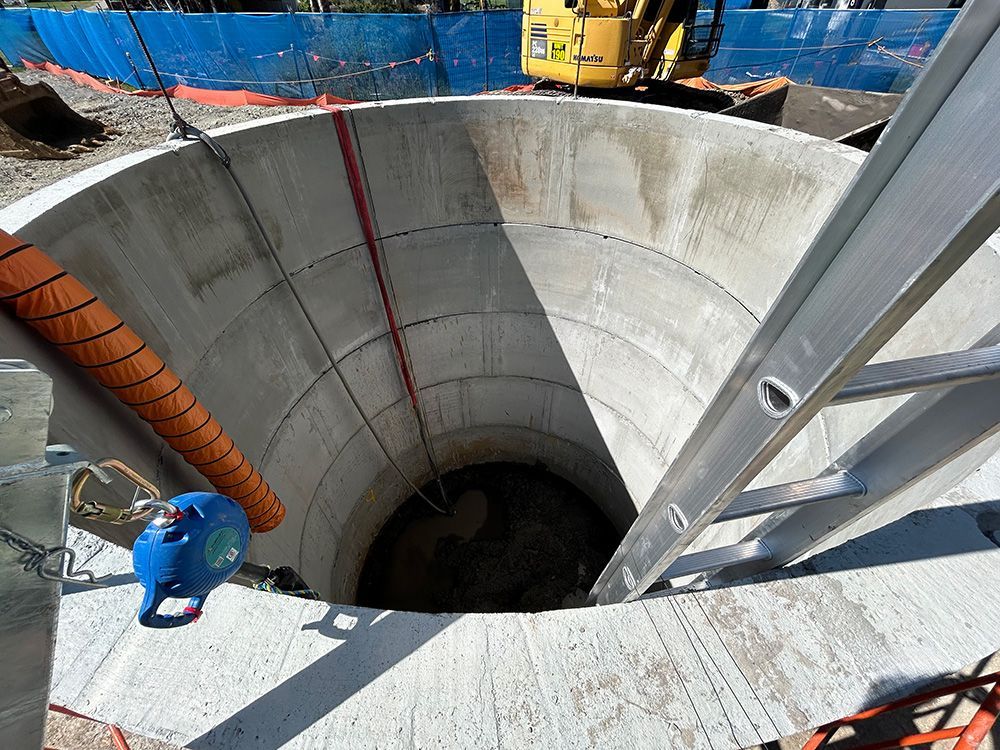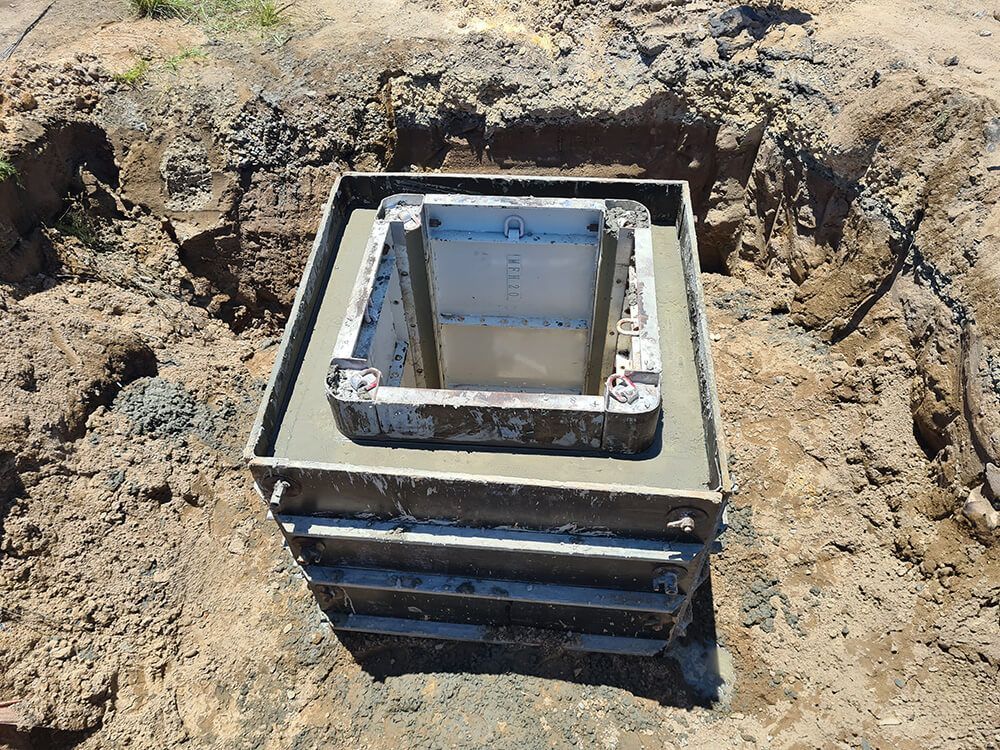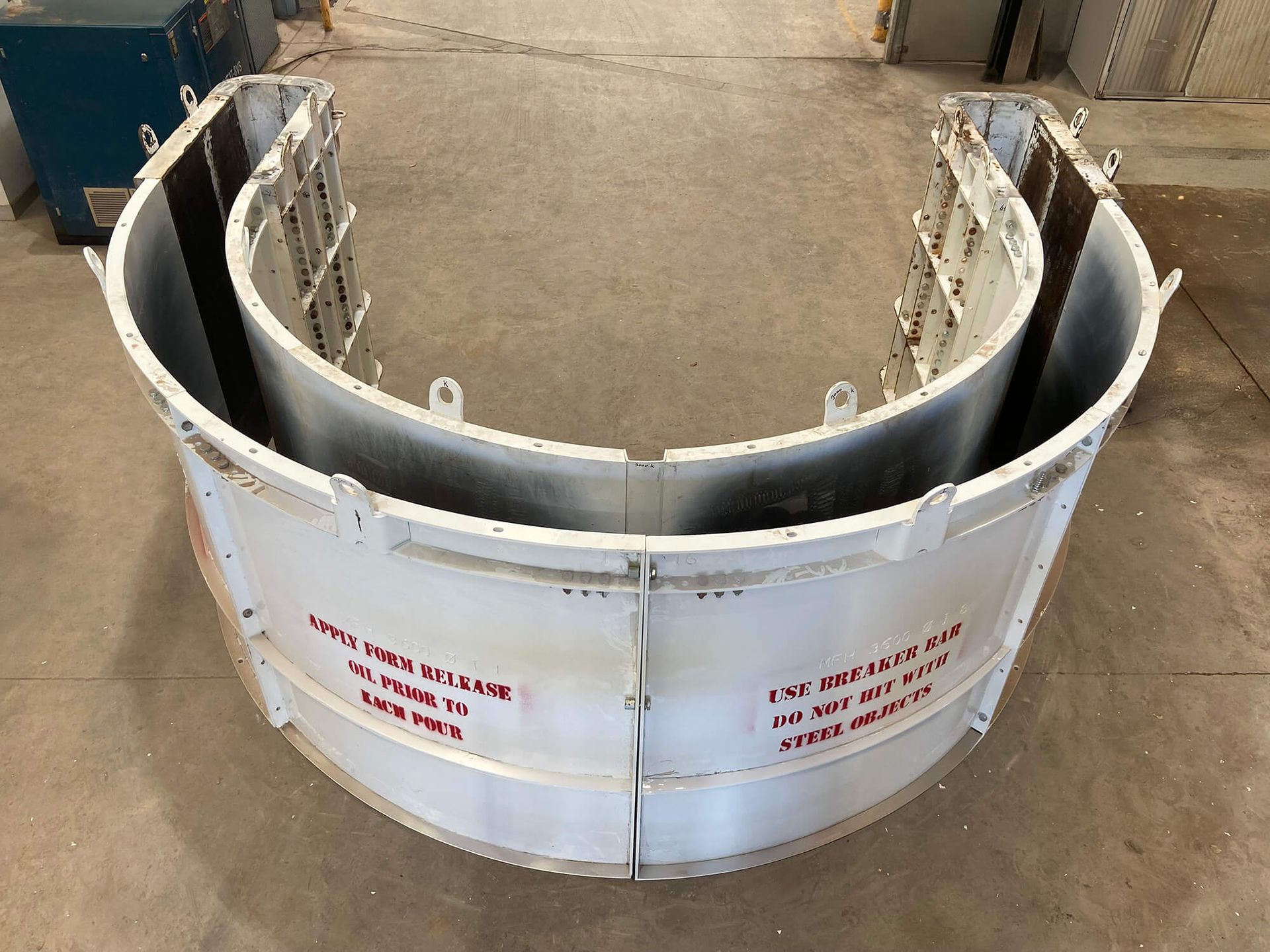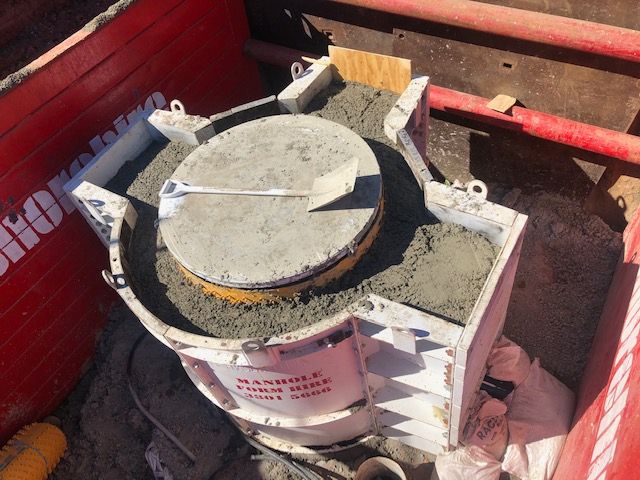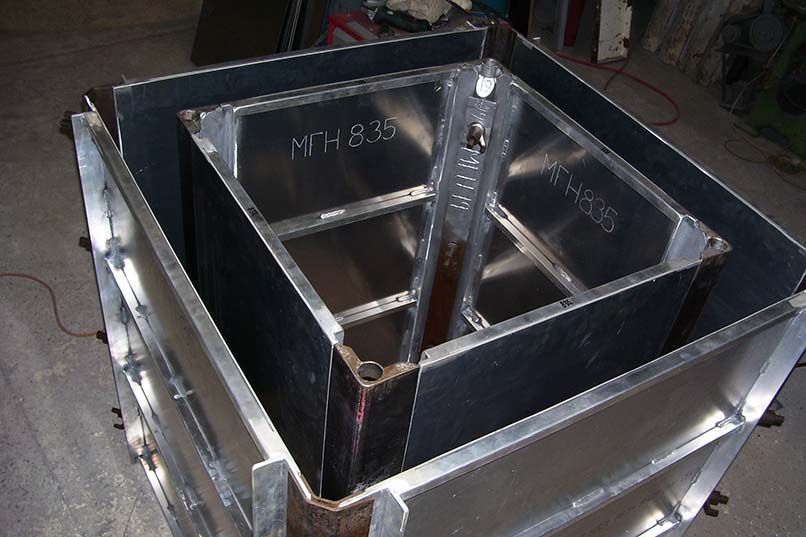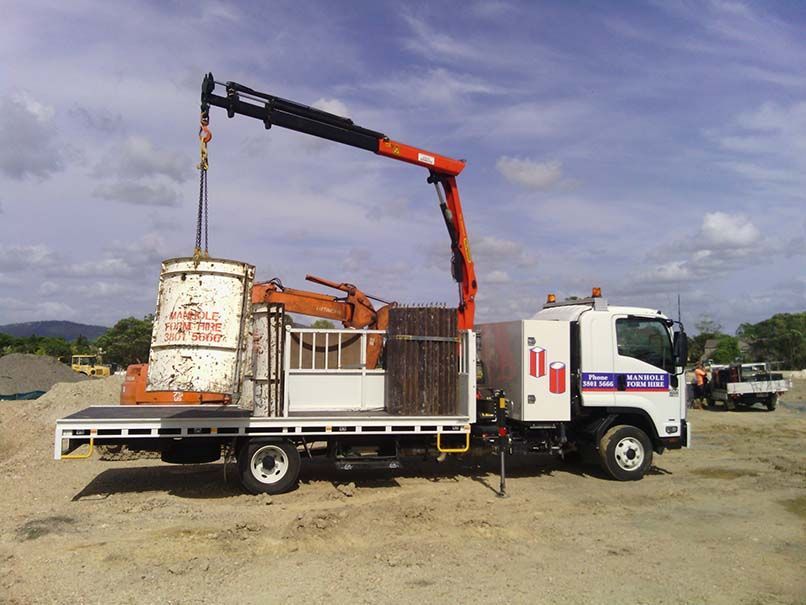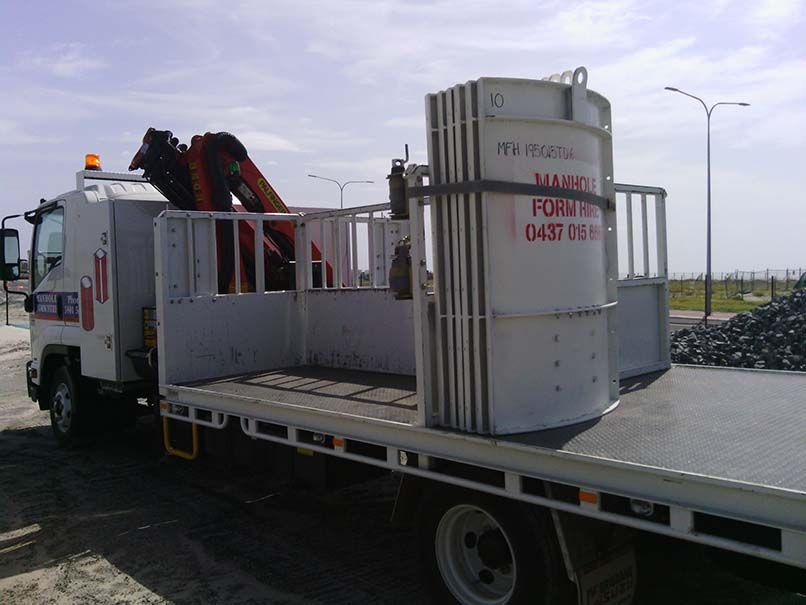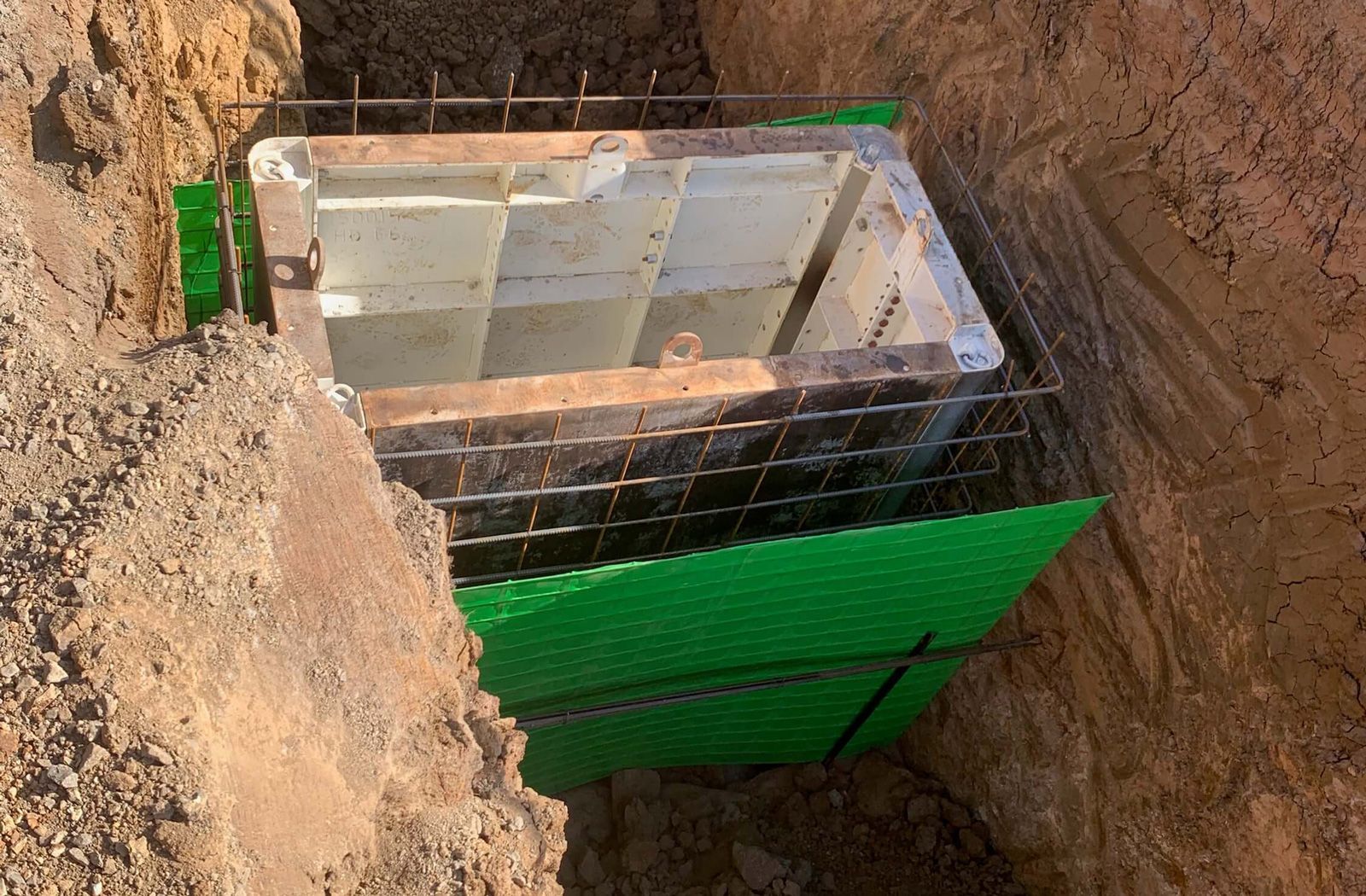Concrete pits serve a wide range of purposes. They’re largely used to create underground structures like drainage infrastructure. If you’ve found yourself wondering how to use them and what they can help you build, we’ve compiled some of the most frequently asked questions to provide all their answers in one place.
-
What is a concrete pit?
A concrete pit is a durable, below-ground structure made of concrete that is designed to provide a functional space for various applications. It typically consists of a square or rectangular shape, open at the top, and can vary in size depending on its purpose. Concrete pits are commonly used in industrial, commercial, and residential settings, offering a reliable solution for managing utility lines, water drainage, or accessing underground infrastructure.
-
How do you make a concrete pit?
Constructing a concrete pit involves several essential steps to ensure its stability and longevity. Here's a simplified breakdown of the process:
Excavation
Start by digging a hole in the desired location and ensuring it's large enough to accommodate the pit's dimensions and any necessary clearances.
Reinforcement
Install a sturdy framework of steel rebar or wire mesh within the pit to ensure its strength and durability.
Formwork
You can implement pit boxes around the excavation site to define the shape of the pit. These pit boxes act as a mould for the concrete.
Pouring the concrete
With the pit boxes in place, carefully pour the concrete mixture into the pit, ensuring it is evenly distributed and adequately compacted to eliminate air pockets.
Curing and finishing
Allow the concrete to cure over time, following the manufacturer's recommendations. Once cured, remove the pit boxes and finish the surface as desired, such as smoothing or adding protective coatings.
-
Can I pour concrete directly on dirt?
While it may be tempting to pour concrete directly onto dirt when installing a concrete pit, it's not recommended. Concrete needs a stable base to prevent cracking, settling, or other structural issues. Without proper preparation, the soil beneath the concrete can shift, leading to uneven surfaces and potential damage over time.
To ensure a solid foundation, it's crucial to prepare the ground properly. This typically involves excavating the soil, compacting it to eliminate air gaps, and adding a layer of compacted gravel or crushed stone. This stable sub-base provides a solid surface for the concrete, promoting even weight distribution and minimising the risk of future issues.
-
Can you pour concrete against concrete?
Yes, pouring concrete against an existing concrete surface is possible and commonly done when constructing concrete pits. This method allows for seamless integration between the new concrete and the existing structure, providing a continuous and sturdy foundation.
When pouring concrete against concrete, it's important to ensure proper surface preparation. Clean the existing concrete thoroughly, removing any debris, loose particles, or contaminants. Additionally, consider applying a bonding agent or primer to promote adhesion between the old and new concrete surfaces.
You can get concrete pit boxes from Manhole Form Hire to make installation easy
Concrete pits offer versatile and reliable solutions for various applications, ranging from drainage systems to utility access. By utilising pit boxes, the installation process becomes even more efficient and straightforward. Manhole Form Hire provide a variety of pit box hire options, so get started on installing a concrete pit today by contacting us.
Get a quick quote
We will get back to you as soon as possible.
Please try again later.
Contact us
If you have any questions about our manhole form hire options or any of our other products, don't hesitate to contact us. Servicing across Australia, including Queensland, New South Wales, and Victoria, our team of experts are always ready to help you find the right manhole forms for your needs and provide support. Whether you’re building a manhole for civil or council purposes, our forms are perfect for you. Either fill in our enquiry form or give us a call to get in touch today.
2 Freight St, Gold Coast QLD 4207, Australia
Trading Hours
- Mon - Thu
- -
- Friday
- -
- Sat - Sun
- Closed

